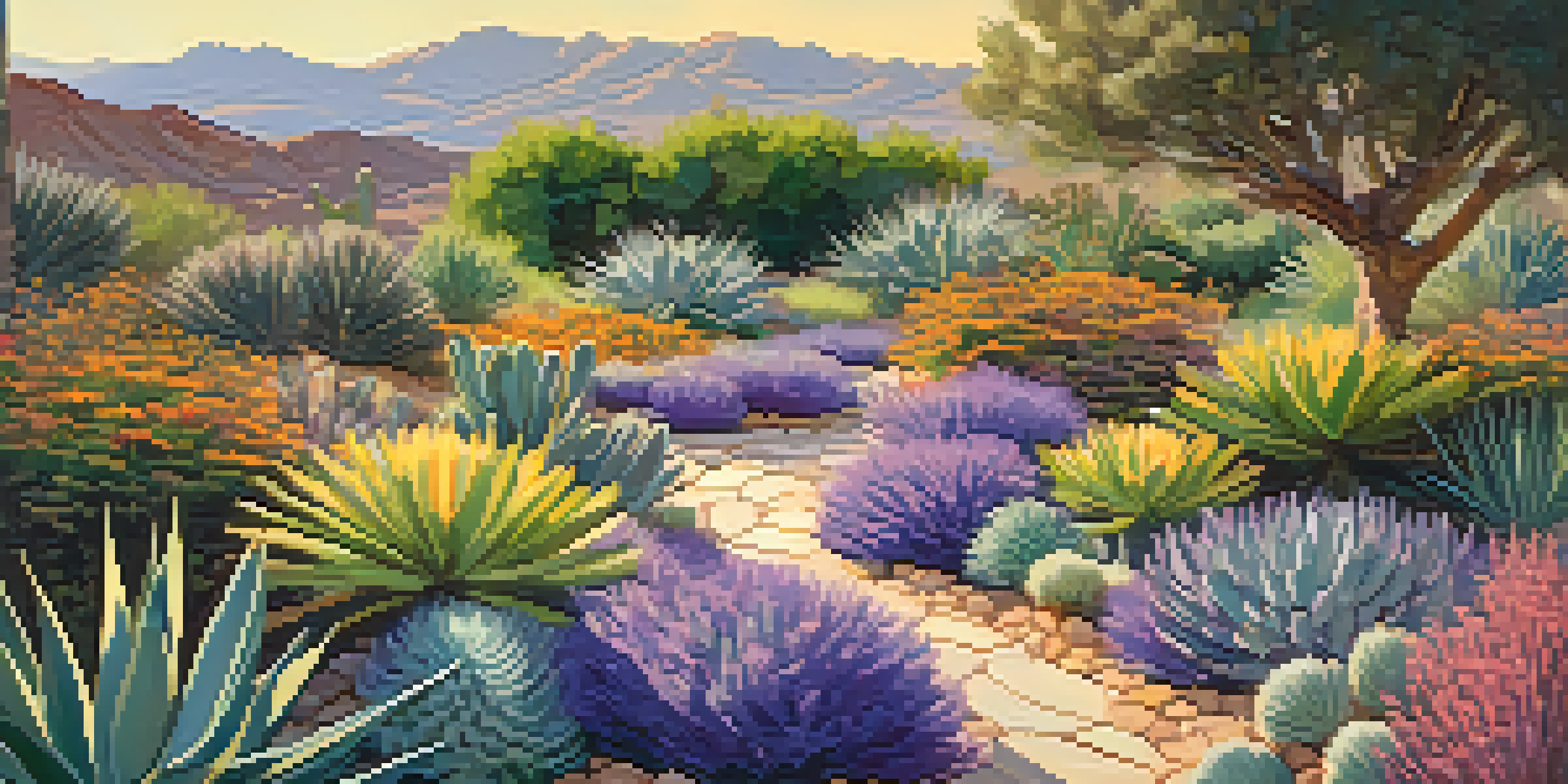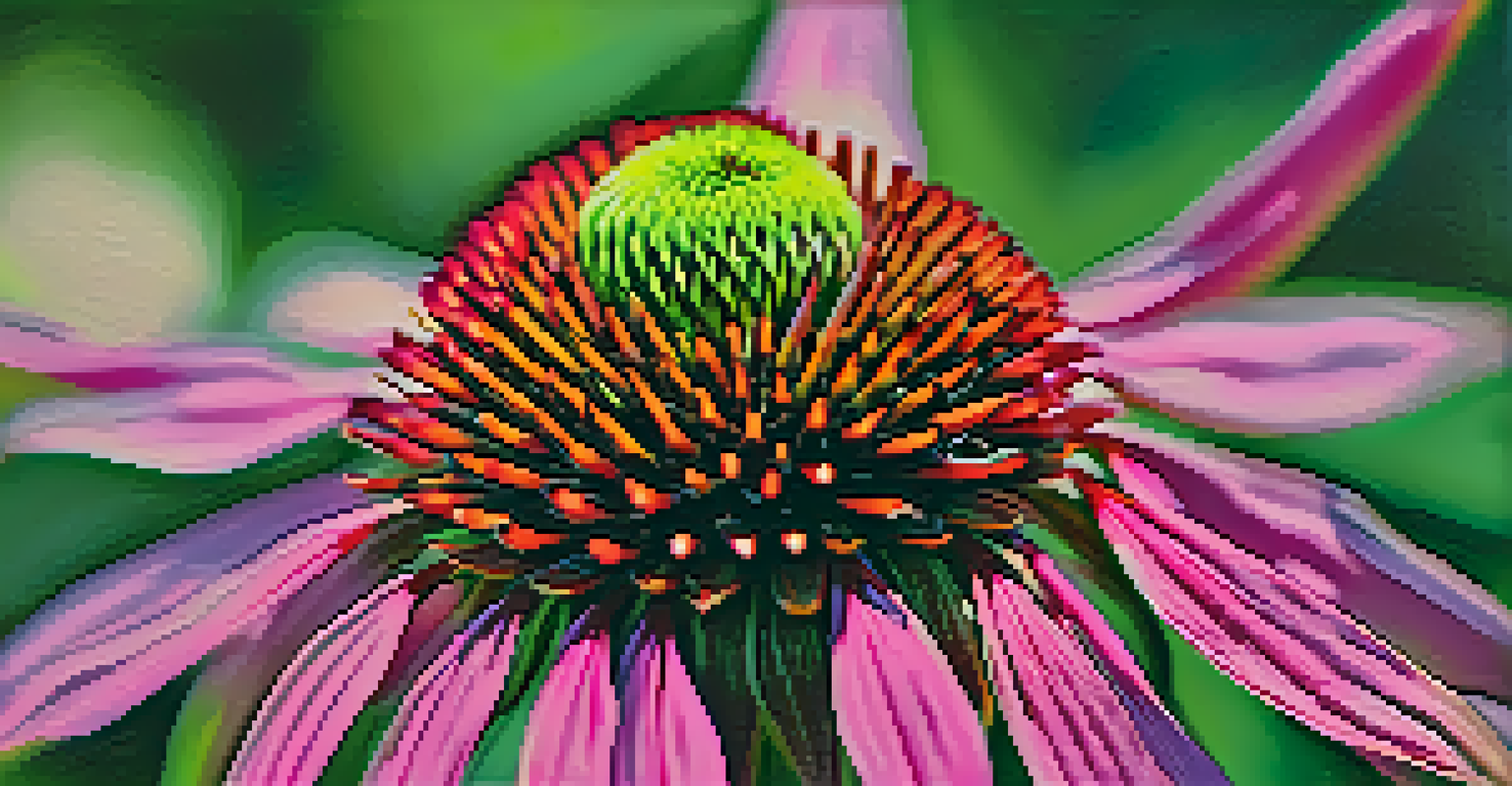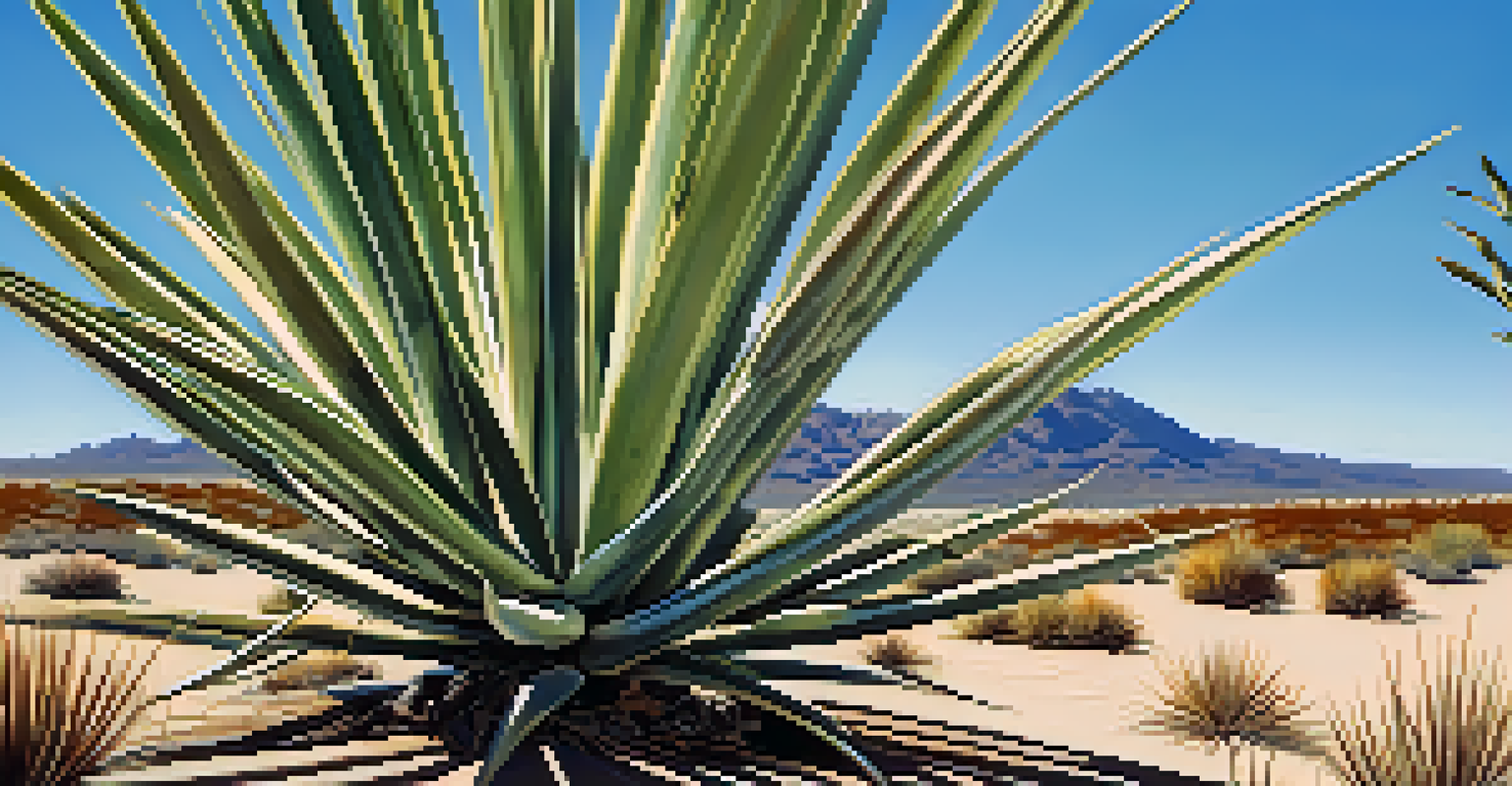Top 10 Drought-Resistant Plants Perfect for Arid Gardens

Understanding Drought-Resistant Plants for Your Garden
Drought-resistant plants are those specially adapted to survive in dry conditions. These plants have unique traits, such as thick leaves or deep root systems, allowing them to conserve water. By choosing these resilient varieties, you can create a beautiful garden that thrives even in arid climates.
The best time to plant a tree was twenty years ago. The second best time is now.
The importance of water conservation in gardening cannot be overstated. With climate change leading to more frequent droughts, selecting plants that require less water can significantly reduce your overall water usage. This not only benefits your garden but also contributes to a more sustainable environment.
As you explore drought-resistant options, consider how these plants can enhance your garden's aesthetic appeal. Many of these varieties offer stunning colors, textures, and forms, proving that a beautiful garden doesn’t have to come at the cost of excessive water consumption.
1. Agave: The Desert Marvel
Agave plants are iconic for their striking appearance and incredible drought tolerance. With thick, fleshy leaves that store water, they can survive long periods without rainfall. Additionally, their dramatic rosettes can serve as stunning focal points in any garden.

These hardy succulents thrive in poor soil and require minimal maintenance, making them perfect for busy gardeners. They can be found in various sizes and shapes, from the small, delicate Agave parryi to the towering Agave americana. Choose the right variety to match your garden's scale.
Drought-Resistant Plants Save Water
Choosing drought-resistant plants helps conserve water and creates sustainable gardens in arid climates.
Moreover, agaves can attract pollinators, like bees and butterflies, especially when they bloom. Their tall flower stalks reach high above the foliage, providing a beautiful display while also supporting local wildlife—a win-win for your garden!
2. Lavender: Fragrant and Resilient
Lavender is not only loved for its soothing fragrance but also for its drought resistance. This perennial herb thrives in well-drained soil and requires very little water once established. Its silvery-green foliage and purple blooms add charm and elegance to arid gardens.
Plants are the earth's endless effort to speak to the listening heaven.
In addition to being drought-tolerant, lavender has the added benefit of attracting pollinators and beneficial insects. A garden filled with lavender will not only smell delightful but will also be buzzing with life, enhancing the ecosystem around it.
Plus, lavender is versatile—it can be used in cooking, crafting, and aromatherapy. By incorporating this plant into your garden, you get both beauty and utility, making it a fantastic choice for any arid landscape.
3. Sedum: The Hardy Succulent
Sedum, commonly known as stonecrop, is a diverse group of succulents that thrive in dry conditions. These plants come in various shapes and sizes, offering versatility for any garden layout. Their fleshy leaves store moisture, allowing them to withstand dry spells effortlessly.
One of the best features of sedum is its ability to spread and create beautiful ground cover. This makes it an excellent choice for filling in spaces where other plants might struggle. Plus, they come in stunning colors that change with the seasons, adding year-round interest.
Diverse Plants Boost Garden Health
Incorporating a variety of drought-tolerant species enhances biodiversity and resilience against pests and diseases.
Sedum also requires minimal care, making it perfect for gardeners looking for low-maintenance options. With their resilience and beauty, these plants are a fantastic addition to any arid garden.
4. Russian Sage: A Beautiful Resilience
Russian sage is a striking perennial known for its tall spikes of lavender-blue flowers and aromatic foliage. This plant is exceptionally drought-tolerant and thrives in hot, dry conditions, making it ideal for arid gardens. Its silvery-gray stems add a beautiful contrast to other greenery.
Beyond its aesthetic appeal, Russian sage is also a magnet for pollinators, including bees and butterflies. Planting this perennial not only beautifies your garden but also supports local wildlife, creating a vibrant ecosystem.
Russian sage is also quite adaptable and can thrive in poor soil conditions. This makes it a reliable choice for gardeners looking to create a low-maintenance, sustainable garden without sacrificing beauty.
5. Echinacea: The Hardy Coneflower
Echinacea, or coneflower, is a beloved perennial that brings both beauty and resilience to arid gardens. Known for its daisy-like flowers in vibrant colors, Echinacea can handle dry spells with ease. Its deep taproot allows it to access moisture from deeper soil layers, ensuring survival during droughts.
In addition to its drought tolerance, Echinacea attracts a variety of pollinators, including butterflies and bees. This not only enhances the beauty of your garden but also plays a vital role in supporting local ecosystems. It's a great way to contribute to biodiversity!
Low Maintenance for Busy Gardeners
Many drought-resistant plants require minimal care, making them ideal for gardeners with busy lifestyles.
Echinacea is also known for its medicinal properties, often used to boost the immune system. By incorporating this plant into your garden, you're not only creating a stunning landscape but also growing a beneficial herb for your health.
6. Yucca: A Bold Choice for Arid Gardens
Yucca plants are striking, architectural specimens that thrive in dry, sandy soil. Known for their sword-like leaves and tall flower spikes, they add a dramatic touch to any garden. These plants are incredibly tough, requiring minimal water and care once established.
Beyond their visual impact, yucca plants are also beneficial for wildlife. Their flowers attract pollinators like hummingbirds and bees, while the foliage provides shelter for various insects. This makes them a great addition to promote biodiversity in your garden.

Yucca plants also have a unique ability to withstand extreme temperatures, making them ideal for hot, arid climates. Their resilience and beauty make them a fantastic choice for gardeners looking to create a striking yet low-maintenance landscape.
7. Rosemary: A Culinary and Drought-Tolerant Gem
Rosemary is not only a popular culinary herb but also a resilient plant that thrives in dry conditions. This fragrant evergreen can withstand drought and poor soil, making it an excellent choice for arid gardens. Its aromatic leaves and lovely blue flowers add both beauty and utility to your outdoor space.
In addition to its culinary uses, rosemary attracts beneficial insects, like bees and butterflies, enhancing your garden’s ecosystem. This not only helps pollinate your other plants but also brings more life and activity to your garden.
Rosemary is also easy to grow and requires minimal maintenance. By incorporating this herb into your garden, you can enjoy delicious home-cooked meals while enhancing the beauty of your arid landscape.
8. Choosing the Right Drought-Resistant Plants for Your Garden
When selecting drought-resistant plants, consider your garden's specific conditions, such as soil type and sunlight exposure. Different plants have varying needs, so it's essential to match them to your environment for optimal growth. This ensures that your garden will not only survive but thrive in arid conditions.
Furthermore, consider creating a diverse plant palette. Mixing different species can enhance biodiversity, making your garden more resilient to pests and diseases. A varied garden is not only more visually appealing but also supports a healthier ecosystem.
Finally, remember that establishing drought-resistant plants may take some time. Be patient, and once they're settled, you'll enjoy a low-maintenance, beautiful garden that requires significantly less water than traditional gardens, helping you contribute to water conservation efforts.